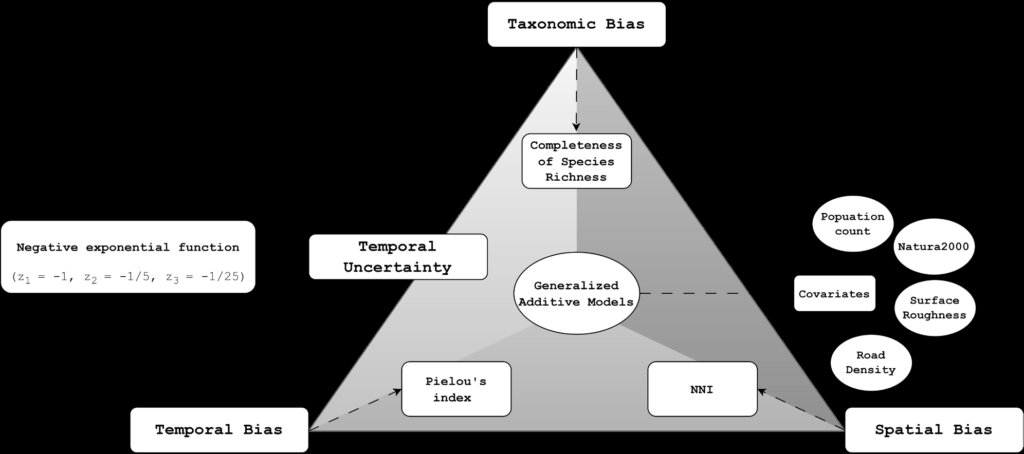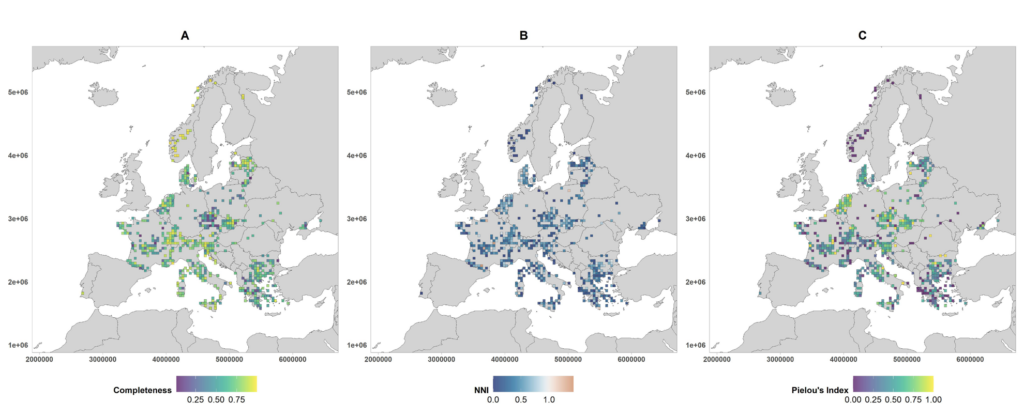A new article by Elisa Marchetto and her team addresses the growing issue of biases and uncertainties in large-scale biodiversity databases, which are essential for biodiversity research and conservation on a continental scale.
Expansion of Biodiversity Databases and Their Limitations
The growth of biodiversity databases, such as BIEN and sPlot, presents crucial opportunities for research and monitoring biodiversity on a global scale. However, species occurrence data often contain taxonomic, spatial, and temporal biases that affect the reliability of biodiversity estimates. These biases stem from uneven data collection and various sources of uncertainty, which reduce the ability to accurately describe and analyze biodiversity.
Methods for Assessing Biases and Uncertainty
This study utilizes data from sPlotOpen and proposes a framework for assessing three dimensions of bias: taxonomic, spatial, and temporal, complemented by a method to quantify temporal uncertainty. Taxonomic bias is measured by species richness completeness, spatial bias through the Nearest Neighbor Index (NNI), and temporal bias with Pielou’s index. Temporal uncertainty is modeled using a negative exponential curve to quantify the decay of information over time.
Findings and Influence of Spatial Variables
Results show that biases and uncertainties are not evenly distributed across Europe. For example, the presence of Natura 2000 protected areas significantly influences all three types of biases, while human population density contributes only to spatial bias. The study highlights that a systematic approach to assessing biases and uncertainties can enhance data quality in biodiversity databases and lead to more accurate biodiversity estimates across various levels.
See whole article here: https://doi.org/10.17161/bi.v18i.21810



